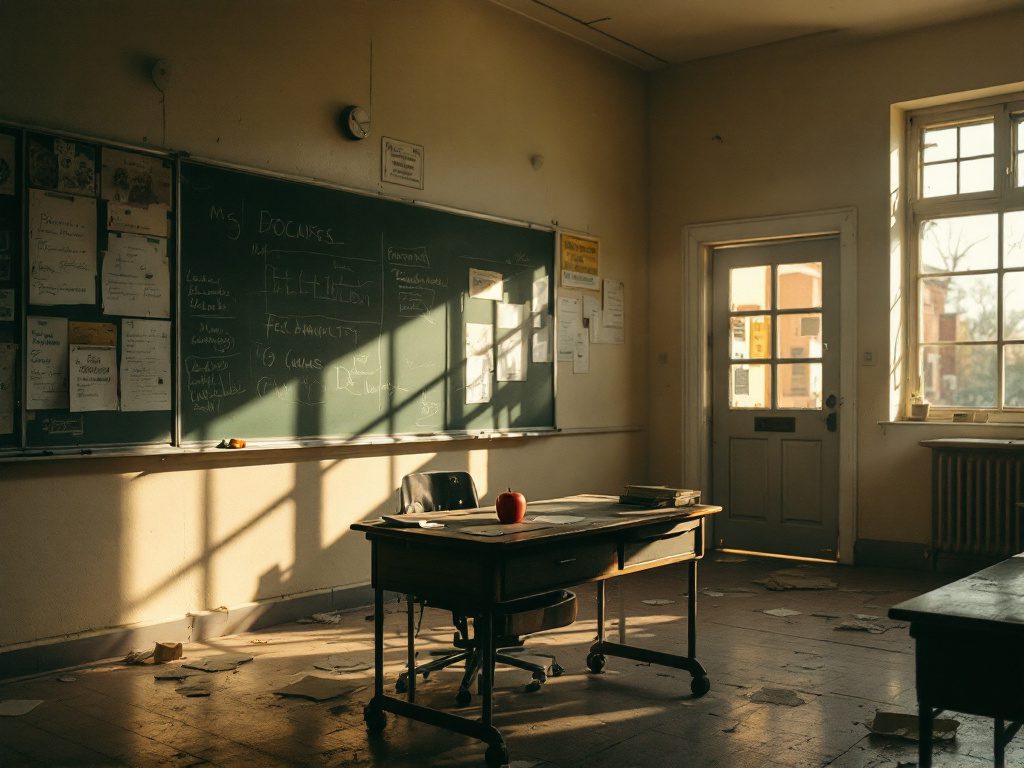The Stark Reality: A Deepening Teacher Pay Crisis
Walk into any North Carolina public school these days, and a quiet anxiety hums beneath lesson plans and morning pledges. A recent National Education Association (NEA) report confirms what many have suspected: North Carolina now ranks 43rd out of 50 states and D.C. for average teacher pay, with the average salary sitting at $58,292—nearly $14,000 below the national norm of $72,030. Even as lawmakers tout incremental raises—this year, 2.3% and a promised $3,000 bonus over the next two years—the underlying trends tell a damaging story.
Consider the lived reality: veteran teachers stare down stagnant pay progression and wave after wave of increased expectations. At the same time, up-and-coming educators contemplate taking their talents elsewhere. The earned optimism from state leaders about having moved from 42nd to 39th in starting pay—from $39,000 to $41,000—rings hollow when the state continues to backslide overall. These numbers are more than statistics; they echo through hallways in the form of unfilled vacancies, larger class sizes, and exhausted teachers juggling multiple responsibilities.
According to the NEA, North Carolina’s teachers earn just 75 cents to the dollar compared to similarly educated professionals statewide—a pay gap that saps morale and recruitment alike. Jane Smith, a high school math teacher in Durham, described the quandary: “We want to be here for the kids, but at what cost to our own families?”
Behind the Numbers: Inequities and Erosion of Buying Power
Numbers alone don’t convey the full scope of the crisis. Dig a little deeper, and the disparities become stark. Some counties, like Wake, have taken it upon themselves to offer robust local salary supplements, pushing starting salaries up to $48,339. Meanwhile, elsewhere in the state, new teachers begin with the bare minimum—just $41,000. This patchwork approach to compensation creates a two-tiered system, where a teacher’s earning potential is as much a result of their zip code as their credentials or dedication to students.
Harvard economist John Friedman notes, “When localities must shoulder the burden of educator pay on their own, inequality across districts invariably grows.” North Carolina’s own business-backed education group, BestNC, points out that even those increases have failed to match inflation, eroding the buying power of educators. The NEA’s data shows that while salary increases nationally averaged 3.8%, North Carolina’s crept ahead only by about 3%.
Why does this matter? Teachers are facing higher costs for everything from housing to health care. As a result, many take on extra jobs or leave for neighboring states like Virginia or South Carolina—each with teacher pay average notably higher. Beyond that, the state has increasingly relied on international faculty and career changers simply to fill vacancies—a Band-Aid solution for a structural wound.
“The most dedicated teachers in North Carolina are being forced into a choice between serving their students and providing for their own families. This is not just a numbers issue—it’s a question of moral priorities for our state.”
Even as the state rose three spots to 36th for Educational Support Professions—earning an average $31,686—these ranks are hardly faring better. Teaching assistants, custodians, and bus drivers all play vital roles but are still largely underpaid, often relying on second jobs or public assistance to make ends meet.
The Fallout: Teacher Attrition, Student Impact, and Political Stalemates
North Carolina’s dwindling teacher pay is not an abstract policy failure. For thousands of students, it translates into fewer experienced teachers, larger class sizes, and diminished classroom innovation. According to the North Carolina Association of Educators (NCAE), vacancies and turnover have “accelerated rapidly” since the Great Recession, with educator exit rates well above the national average. This attrition is especially acute among Black, Indigenous, and Latino teachers—further undermining efforts to foster inclusive classrooms.
Barbara Greene, an Asheville elementary teacher, tells a story emblematic of the struggle: “Two of my closest colleagues left this year to teach across the state line. They made almost $7,000 more overnight, with better benefits.” Without genuine legislative prioritization of public education funding, these departures are poised to become the norm, not the exception.
Education advocates are raising their voices—most recently demanding a “no-cuts budget” from county governments stretched thin by disaster recovery costs, such as those following Hurricane Helene. But calls for action face predictable resistance. Conservative lawmakers, emphasizing tax cuts and limited government, have repeatedly blocked more robust raises and funding reforms. The result: stagnation and the false narrative that small, incremental pay bumps constitute meaningful progress. As NCAE vice president Bryan Proffitt pointedly remarked, “What we’re seeing isn’t just a budgetary shortfall; it’s a shortfall of vision.”
Tangled policy priorities—voucher expansions, privatization, and under-funded mandates—sap attention and resources from classroom investments. These conservative experiments, critics argue, have left traditional public schools starved for talent and resources. North Carolina, once a beacon for innovative teacher support in the South, now lags behind every neighboring state in educator pay and is projected to slip even further next year.
Is there a path forward? Evidence from states like Massachusetts and Maryland, where sustained investments in teacher compensation have yielded both academic gains and stronger teacher pipelines, offers hope. States that put educators first enjoy lower turnover and improved student outcomes: a lesson the Tar Heel State would do well to heed.
The Stakes for North Carolina’s Future
If public education truly is the bedrock of democracy, North Carolina’s current trajectory should ring alarm bells for anyone concerned with the common good. Students deserve more than exhausted, underpaid teachers; they deserve fully funded classrooms and a society that values those who educate the next generation. Bryan Proffitt of the NCAE put it plainly: “This ranking is about our priorities as a state. If we don’t change course, we risk losing not just teachers—but our future.”
As liberal-minded North Carolinians, we must demand policy boldness: robust, inflation-adjusted salary schedules, targeted retention incentives, and statewide, not piecemeal, support packages. A revitalized commitment to public education is required—not just for teachers, but for the fabric of North Carolina itself.

